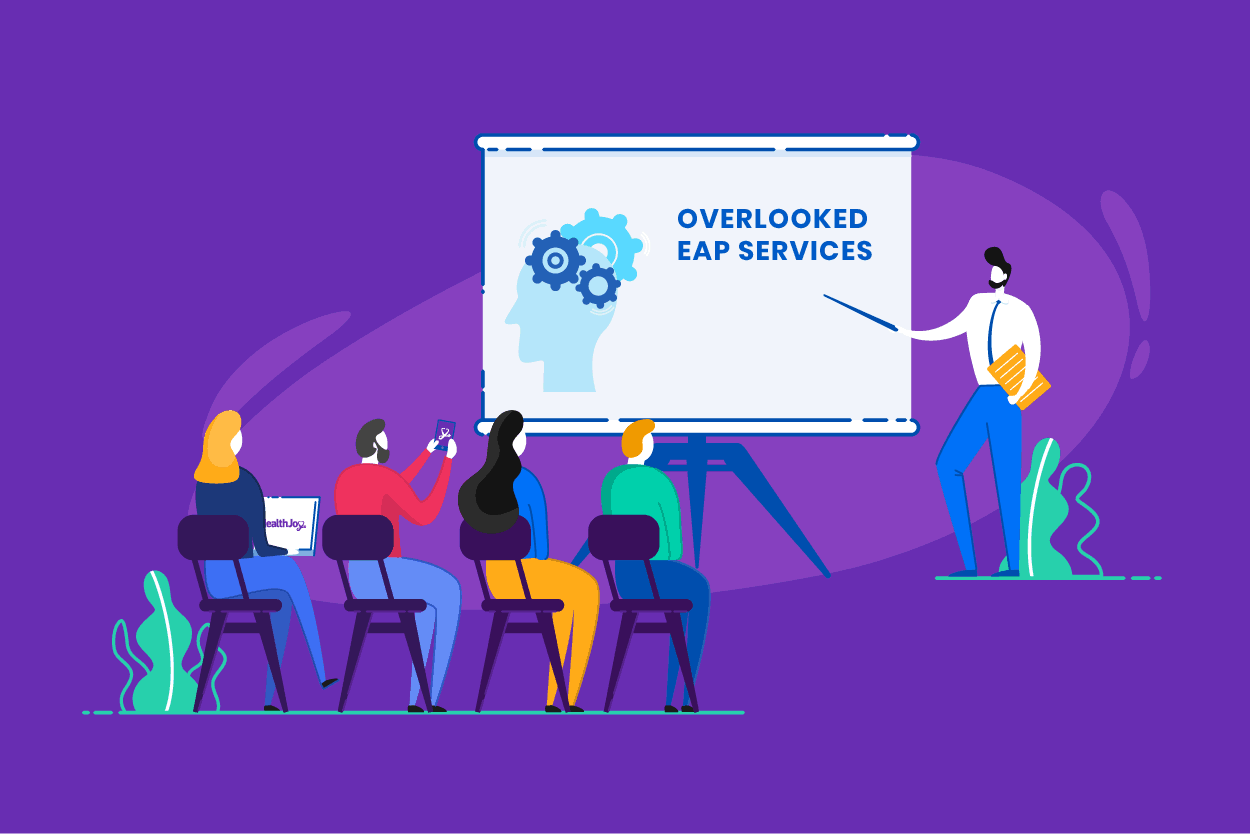Ensure Success With Your Financial Wellness Programs
With employment gains across all industries, the US economy saw 709,000 jobs created in December and November amid a surge in coronavirus cases. But...
Connected Navigation Platform
Guiding to high-value care
Behavioral Health
Foster a mentally healthy workplace
EAP
Supporting holistic wellbeing
Virtual MSK Care
Reimagining musculoskeletal care
Virtual Primary Care
Powered by smart navigation
Surgery Centers of Excellence
Best-in-class surgical outcomes
Virtual Urgent Care
Immediate care, any hour of the day
Chronic Care
A new approach to chronic care
Integrations
Flexible to any strategy

COVID has changed the landscape of the American workforce in so many ways — from the Great Resignation and labor shortages, to variants and remote work. While there’s plenty to be optimistic about since the onset of coronavirus, such as cities across the US continuing to ease their COVID restrictions, over 216 million people already vaccinated, and progress toward an economic recovery, financial worry remains the top cause of employee stress.
We’ve written extensively about the pandemic’s toll on employee mental health. Even though the situation looked dire back in August, new data from a 2022 Financial Stress Survey suggests the number of employees reporting high levels of financial stress has doubled. Even more interesting, workers are reporting that despite taking some positive short-term steps and are more optimistic about their financial situation, they’re struggling to make long-term decisions and feeling more stressed than ever before. The good news? Employees are more receptive to getting the financial assistance they need, and employers are well-positioned to help.
Through a powerful tool like an Employee Assistance Program (EAP), you can help employees grasp the complete range of support you provide, including financial relief.
Let’s dive into why financial counseling initiatives matter and how they improve employees' financial health.
Financial counseling services can bolster an employee’s financial wellbeing through a combination of education, one-on-one coaching with a certified financial counselor, money management tools, and ongoing support for all financial topics in every stage of life. Other components also include:
Debt management services help employees manage repayment of various lines of credit or loans. This service explicitly targets debt types like student loans, mortgages, and credit card debt, among others. The most common service is debt counseling.
Savings programs are intended to help employees meet short- or long-term financial goals through savings or investment accounts. According to Mission: Money, the workplace is the ideal setting for an employee to save because it’s where income generates and where existing online banking mechanisms (think direct deposit) enable individuals to save and invest in a straightforward and automated way.
Student loan counselors help borrowers determine the best path for repayment based on their unique financial situation.
Short-term loans or accrued wage advances make cash or credit available through the workplace. These tools provide employees with temporary relief and allow for a lower monthly payment over an extended period.
However, we know that EAP utilization is low, and employee perception doesn’t always match reality. Employees may not be aware that an overlooked EAP service like free financial counseling is available through their benefits.
According to a 2021 PwC survey, full-time employees are unprepared for an extended economic recession or short-term cash needs. The study found employees are carrying credit card balances longer and owe more on their cards than the previous year, while less than half of respondents (47%) said they'd be able to meet basic expenses if they were out of work for an extended period. The pandemic created a slew of new financial hardships, but it also heightened existing ones.
Financial stress can negatively impact employee productivity and mental health. And with work-life and home life blurring together, and inflation soaring to 7.9% over the past year, employees’ needs and wants have evolved.
It’s important to note that although employers aren't the cause of the financial stress, they are in a prime position to help. Offering a holistic financial wellness program can:
Bolster employee engagement and retention. A happy employee is a productive and motivated employee. By providing services that empower people to reach their financial goals and achieve stability, employers will find it easier to create and maintain a balanced and positive work culture.
Boost financial literacy. To be fiscally healthy, establishing a solid foundation of financial basics is one place to start. Resources such as financial counseling can educate employees about the value of budgeting, differences between responsible debt and unsecured debt, and more. Information is power. By becoming financially literate, they become better equipped to address money management issues, and alleviate their anxiety.
Empower employees to develop better habits, like saving. When asked to choose which benefit accounts an employer could contribute to, respondents said an emergency/rainy day fund would have the greatest impact versus a 401(k) plan or unlimited PTO, according to a SoFi at Work survey. Offering such a benefit could help employees develop better habits and feel more prepared to navigate future financial hardships.
COVID-19 amplified the need for financial wellness benefits. People want help but only seek guidance at key decision points or when they’re already in crisis. By providing the financial planning tools and counseling they need, you can ensure employees feel valued, which will result in higher productivity and further stability for your business.
This post was originally published in March 2021 and updated in 2022.

With employment gains across all industries, the US economy saw 709,000 jobs created in December and November amid a surge in coronavirus cases. But...

When you think of supporting employee mental health through a pandemic, a counseling benefit might be the first thing that comes to mind. But what...